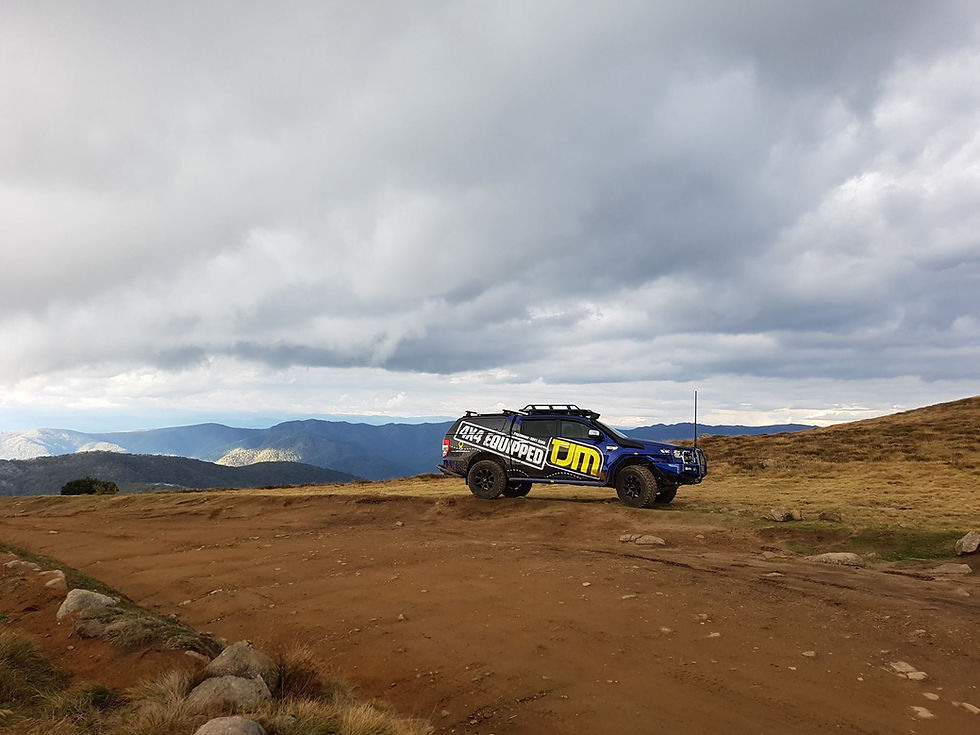How to Use a Snatch Strap
- Oct 25, 2018
- 3 min read

There’s countless 4WD products and accessories that can enhance the performance and appearance of your vehicle, however none are more valuable when you’re stuck in sand or mud than a snatch strap. The snatch strap is really a last option when you’ve exhausted all other recovery avenues such as winching, digging, and recovery tracks, however they are very reliable! Getting bogged is never fun, but it happens to the best of us and it’s paramount that everyone who takes their 4WD off-road understand how to use one.
All 4WD owners should carry a snatch strap with them when touring or off-roading, so if you don’t own one then you definitely should! If you get bogged and need assistance, it’s always considered good form to have your own equipment. If you’ve never had the opportunity of using a snatch strap before, today we’ll be taking you through a step-by-step guide.
Load ratings
A snatch strap is an 8 - 10 metre Nylon Webbing strap that is normally between 60mm and 75mm wide. Snatch straps typically have a load rating of between 6,000kg and 15,000kg and it’s vital that you purchase one that is suitably rated for your vehicle. Your snatch strap load rating should be at least 2 to 3 times the weight of your 4WD. If your snatch strap is too light then it can break and create a potentially deadly projectile, but if it’s too heavy then it can rip the tow point from your vehicle. Precaution should always be taken when using a snatch strap to recover your vehicle and it’s crucial that you know how to use one safely.
Preparation
To give your 4x4 the best chance of being recovered, use a long handled shovel to dig the sand or mud from around the tyres. While you’re at it, also clear away any obstacles from the underbelly of your 4x4 and use a hi-lift jack to hoist the vehicle if needed.
When hooking up the snatch strap to both vehicles, always ensure you use an appropriately engineered tow point and not suspension, bull bars, or tow bars which can break and become a lethal weapon. The connection to your 4x4 must be made with minimum rated 'D' shackles of 3.5 tonnes which should be fixed securely to the tow point of your vehicle. There should also be no passengers in either vehicle and all onlookers should stand a minimum of 1.5 times the length of the strap in every direction.
Recovery method
It's fundamental that both 4x4's are aligned as straight as possible before trying to recover. After the snatch strap has been connected properly to both 4x4's, you should have around 2 metres of slack and coil the strap into a ‘S’ figure to ensure there are no kinks or twists. It's recommended to place a blanket over the middle of the strap which will diminish any recoil if the strap breaks.
Both 4WDs need to be in the same gear (ideally low range 1 or 2) and when both 4WDs are ready, use a UHF radio or hand signals to communicate the agreed point when the rescue vehicle will accelerate. At the agreed point, the rescue vehicle should accelerate smoothly at about 10 - 12 kph at which time the bogged vehicle should release the clutch and accelerate too.
The best recovery approach is to use controlled momentum and avoid any excessive wheel spinning or jerky movements. When the action is slow and smooth, the elasticity of the snatch strap will literally 'suck' the bogged vehicle out of its predicament. If the first try fails then increase the slack to around 3 metres or try to increase the speed of the take off a little.
Being an important piece of recovery equipment, a snatch strap is one of the most practical ways of recovering a vehicle from an unfortunate situation. If you're interested in acquiring a snatch strap for your 4WD, TJM Australia have a wide range of snatch straps for almost every vehicle. For additional information or just some friendly advice, phone their staff directly on 07 3865 9999.




Comments